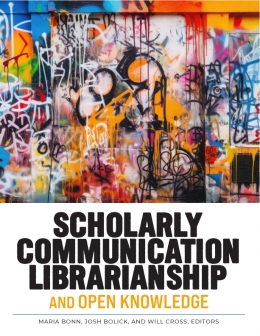In 2023, the American Library Association published Scholarly Communication Librarianship and Open Knowledge; discussing the current landscape for for librarians in academia and including case studies and a more modern definition for scholarly communications. Chapter two focuses particularly on open access and new thoughts and projects around open data and open educational materials. As Boston College Libraries continue to publish open access journals and maintains the open access publishing fund, it is always good to reflect on the larger picture and try to get a sense of the popularity of open access publishing as librarians and scholars continue to think of it as a means of a more equitable publishing model, and a more diverse and inclusive scholarly record.
Once a buzzy, cutting edge model of publishing, open access publications and models have become more common over the past two decades – for good reason. With increased accessibility and generally author-friendly licensing agreements, more and more academic libraries and scholars are seeing the benefits of publishing their work in an open access. However, as more and more researchers, universities, librarians, etc. are growing familiar with open access models, further definitions that encourage wider and more proactive dissemination are being more popular. The generally accepted definition is that open access materials are freely accessible to their readers – no paywall or subscription stands between the content and the prospective reader.
This chapter, however, begins by discussing the UNESCO definition, which goes further:
A publication is considered in Open access if:
- its content is universally and freely accessible, at no cost to the reader, via the Internet or otherwise;
- the author or copyright owner irrevocably grants to all users, for an unlimited period, the right to use, copy, or distribute the article, on condition that proper attribution is given;
- it is deposited, immediately, in full and in a suitable electronic form, in at least one widely and internationally recognized open access repository committed to open access.
Going beyond being freely accessible, this definition includes the submission to an “internationally recognized open access repository committed to open access,” a definition that poses itself directly across from larger publishers continuing to try to use open models as a means of increasing their profitability. While perhaps a bit optimistic for now, chapter author Amy Buckland discusses the implications of allocating resources for more permanent, purposefully open repositories; including machine readability as a part of open publication models; and considering more critically large publishers role in their ability to bolster their own reputations as far as being, “open” despite being the driving force behind paywall and subscription models. As different consortia and coalitions of universities and university libraries begin to create repositories themselves and become less reliant on the likes of Elsevier and Springer to provide access to cutting edge scholarly content, there could be a struggle as universities and their researchers begin to develop leverage as they enter their annual negotiations for subscription deals with these same publishers.

The chapter continues discussing some of the nuances of open access – making clear that not everything should be open access just because of the technological capabilities; privacy is still an important part of publications, particularly if they might contain personal information. Digitizing everything librarians are able to legally digitize might not consider artists or subjects consent as far as the scope of publication prior to a digitized era – and indeed, librarians and practitioners ought to take heed of these pitfalls. Tara Robertson details the experience of finding exotic digitized materials from the 60s, 70s, and 80s whose subjects might not have been able to anticipate the ability of future generations to digitize the pages printed at that time.
Charlotte Roh also contributes a polemic discussion of the role that open access models play in our capitalist society – and points fairly squarely at the role not only large publishers play in maintaining the hegemonic societal norms, but also institutional complicity in this role, and even the pernicious use of open access to effectively sugar-coat the bitter pill of massive publisher monopolies dictating the market for scholarly publication as they search for ways to maintain profitability.
All in all, as the landscape and technology for developing open access models continues to shift, it is essential that librarians grapple with the effects and limits of open access publications as they become more and more popular; thinking about how to limit barriers for students and scholars at our universities, while ensuring the safety and privacy of authors or subjects in current and historical publications.